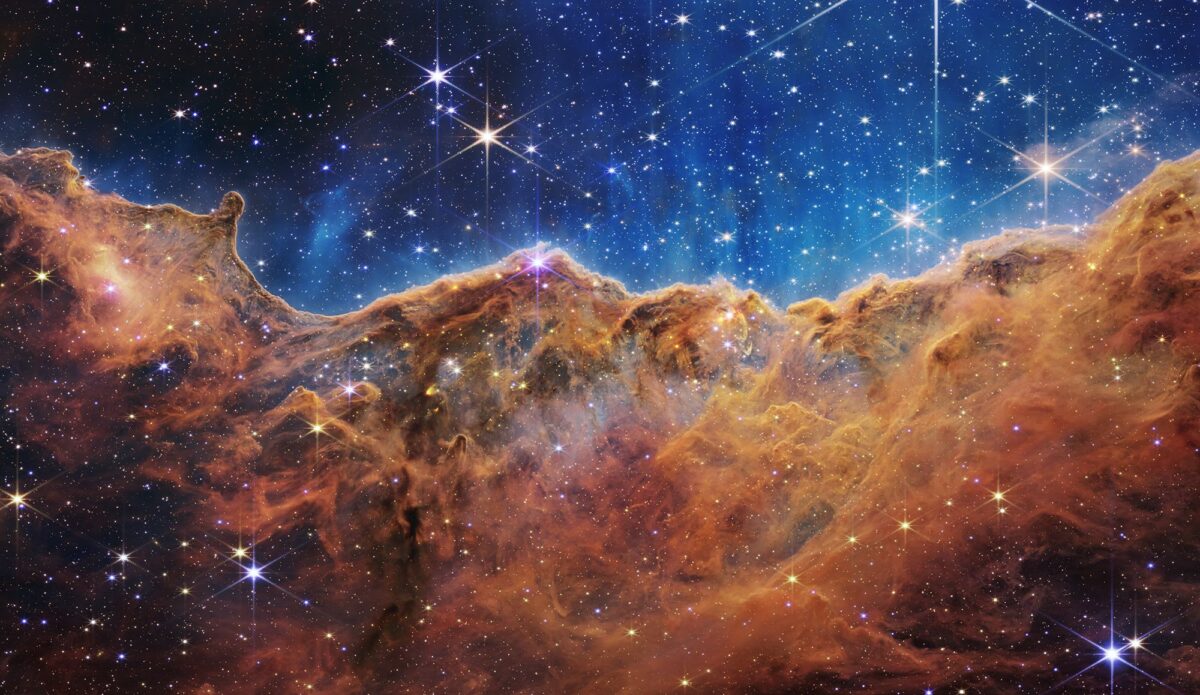A Peek into the Early Nature of Universe
For centuries, cosmologists have strived to get it the birth of the to begin with stars and the nature of worlds in the incipient Universe. Be that as it may, tremendous cosmological separations have ruined coordinate perceptions of these antiquated stellar objects.
A later breakthrough by an universal group driven by Stockholm College, along with collaborators from over Europe, the US, and Japan, changes the amusement. Utilizing the James Webb Space Telescope (JWST), they have recognized five youthful star clusters, possibly the most seasoned ever found, dating back to a insignificant 460 million a long time after the Huge Blast, when the Universe was in its earliest stages.
Table of Contents

Cosmic Gems: A Window to Reionization
The recently found star clusters dwell inside the Infinite Gems circular segment, a far off system transmitting light that has traveled an bewildering 97% over enormous time. This galaxy was initially identified through the Hubble Space Telescope’s Reionization Lensing Cluster Survey. The JWST’s superior resolution, however, allowed researchers to peer deeper into
the early Universe and uncover the presence of these young stellar clusters SPT-CL
J0615−5746. However, the JWST’s superior resolution and sensitivity surpassed
all expectations, allowing researchers to pierce the veil of time and uncover
the presence of these young stellar clusters within the magnified image of the
background galaxy.
Massive and Dense: Properties of Primordial Clusters

These newfound clusters possess unique characteristics. They are exceptionally massive and dense, concentrated within a tiny region of their host galaxy. Notably, they contribute significantly to the galaxy’s ultraviolet light output. Interestingly, their density far surpasses that of star clusters found in our own galaxy, the Milky Way. This difference in density could be attributed to the chaotic and turbulent environment of the early Universe, where star formation processes were likely more violent and efficient.
Clues to Reionization and Globular Cluster Formation
The early Universe witnessed a period of intense star formation within young galaxies, resulting in the generation of copious amounts of ionizing radiation. This era, known as reionization, is crucial for understanding how the Universe transitioned from a state filled with neutral hydrogen gas to one dominated by ionized hydrogen, allowing light to travel freely. This transformation is believed to be driven by the intense ultraviolet radiation emitted by young, massive stars within the first galaxies.

Our Milky Way is home to numerous ancient globular clusters, tightly bound collections of stars that have endured for billions of years. These clusters are considered remainders of the incredible star arrangement occasions in the early Universe. The detection of massive young star clusters in the Cosmic Gems arc presents a tantalizing opportunity to explore the early stages of star formation and their potential evolution into globular clusters.
Unveiling the Birth of Infant Galaxies
This groundbreaking discovery holds immense significance for unraveling the formation and evolution of galaxies in the early Universe. Studying these primordial star clusters can enhance our understanding of how and where infant galaxies were born. The sheer size and density of these clusters suggest that star formation in the early Universe may have been far more efficient than previously thought. Additionally, the presence of these clusters within a faint, distant galaxy implies that even relatively small galaxies may have played a significant role in cosmic reionization.

“These galaxies are believed to be a primary source of the intense radiation that reionized the early Universe,” explains Angela Adamo, lead author of the research paper published in Nature and affiliated with Stockholm University. Furthermore, the discovery potentially provides direct evidence for the existence of “proto-globular clusters” – early versions of globular clusters – formed within faint galaxies during the reionization era. This finding further reinforces the notion that galaxies played a pivotal role in reionizing the Universe.
The exploration of these primordial star clusters promises to unlock a treasure trove of information about the Universe’s infancy, shedding light on the birth of stars, the formation of galaxies, and the critical epoch of reionization. With the advent of powerful telescopes like the JWST, astronomers are poised to embark on a thrilling journey of uncovering the Universe’s profound history.



